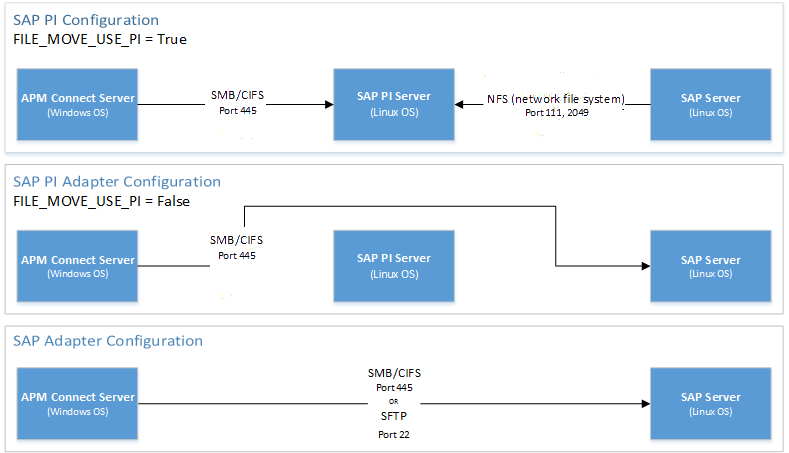If you are using SAP PI, create a file share on your APM Connect server, and then mount it to your SAP PI server. Then, create a share on your SAP server, and then mount to your SAP PI Server. Similarly, if you are not using SAP PI, or you are bypassing your SAP PI server, you must create a file share on your APM Connect server, and then mount it to your SAP Server.
Note: The SAP PI Adapters determine if SAP PI server will be used via the FILE_MOVE_USE_PI parameter in the context file. If the parameter is true, then SAP PI will be used to copy files from your SAP server to your APM Connect server. If it is false, SAP PI will not be used to copy files from your SAP server to your APM Connect sever. In both configurations however, the SAP PI server will be used to proxy RFC calls.
Additionally, in the most common architecture, the APM Connect server is hosted on a Windows Sever with the SAP server and the SAP PI server hosed on a Linux server. The following diagrams details the recommended configurations.
